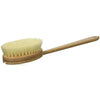How the Lymphatic System Protects Us and Top Ways to Enhance Its Function

The lymphatic system plays a critical role in detoxifying harmful proteins, pathogens and waste products, maintaining overall functioning of all organs and metabolic processes. Using exercise and movement threapies to improve this system can significantly enhance one’s health and prevent disease. This guide will explore the intricate physiology of the lymphatic system and the ways we can help it remove toxic proteins, pathogens and other waste from the body.
What is the Lymphatic System
The lymphatic system is comprised of lymph nodes, lymph vessels, and the spleen, thymus, tonsils, and bone marrow. These organs and systems work together to transport and filter lymph fluid throughout the body, 2/3rds of which is mechanically pumped by pressure differentials generated by cells secreting muscle-contracting compounds that allow vessels to contract, with the remaming 1/3 of lympathic flow coming from exercise and stretching. A complex network of lymphatic capillaries are spread throughout the body along blood vessels, containing about 450 lymph nodes strategically placed around the system. Lymph nodes themselves consist of blood vessels, lymphovenous connections and numerous afferent ducts (ducts that deliver anitgens and other macromolecules into the nodes) and efferent ducts (which channel lymphocytes out of the nodes).

(3).
The lymph fluid, which is produced in the liver, filters foreign pathogens and triggers immune responses. It is a clear and rich in white blood cells, particularly lymphocytes, which are crucial for immune function. Lymph also contains proteins, fats, and waste products from cells, and constitutes the interstitial fluid, which bathes tissues and cells, collecting cellular waste, toxins, and other unwanted materials. When the body becomes too burdened with toxic waste, the lymph nodes can become inflamed and enlarged by the large number of lymphocytes that migrate into the nodes. Over time, lymph nodes are also burdened by the accumulation of adipocytes and other toxins that impair lymphatic function and encourage tumor development. What is interesting is that the antigens created in the lymph nodes are stored for at least several weeks, stored in the lymphatic endothelial cells, which is important to long-term immune development against pathogens. Studies have found that the vasculature of the lymphathic system can itself modulate how antigens are distributed among lymph nodes, but how the lymph cells are involved in T-cell differentiation, and anti-tumor activities, remains largely unknown.
How the Body Uses the Lymphatic System to Detoxify
Because the lymph fluid is pumped through mechanistic action, it is dependent on exercises, movement and stretches to help it circulate. The lymphatic system acts as a secondary circulatory system, working alongside the cardiovascular system to remove waste products. Lymph nodes filter the lymph fluid, trapping bacteria, viruses, and other harmful substances. The cleansed lymph is then returned to the bloodstream, aiding in the body's natural detoxification processes.
Evidence for Exercise
Lymphatic flow is dependent on the movement of joints and lymph nodes have been strategically placed in areas of the body where pumping action creates the greatest effect on circulation. Studies on the use of osteopathic lymphatic pump treatment (LPT), have shown that it:
- Improves “antibody responses to vaccines (including pneumococcal and hepatitis B) and significantly increase secretory immunoglobulin A in a stressed population.
- “Mobilize(s) leukocytes from gut-associated lymphoid tissue,
- Significantly increase leukocyte count,
- Mobilize(s) inflammatory mediators such as interleukin 8, interleukin 6, interleukin 10, monocyte chemoattractant protein 1, granulocyte colony-stimulating factor, keratinocyte-derived chemoattractant, nitrite, and superoxide dismutase.” (2).
The Best Movements for Getting Your Lymphatic System Pumping
Rebounding: or bouncing on a mini-trampoline, is one of the most effective exercises for stimulating the lymphatic system. The vertical movement helps open and close the one-way valves in the lymphatic vessels, enhancing lymph flow and detoxification.
Dry Brushing: While not a traditional "exercise," dry brushing is a manual technique that can boost lymphatic circulation. Using a natural bristle brush, perform circular motions towards the heart, which encourages lymph flow and exfoliates the skin simultaneously.
Yoga Poses: Certain yoga poses, such as inversions and twists, can effectively stimulate lymphatic drainage. Poses like Downward Dog, Legs Up the Wall, and Spinal Twists help facilitate lymph flow and detoxification. Incorporate these poses into a daily yoga routine for optimal benefits.
The Top Toxins that the Lymphatic System Removes
Environmental Toxins
The lymphatic system helps eliminate environmental toxins such as heavy metals (lead, mercury), pesticides, and industrial chemicals. These substances can accumulate in the body over time, leading to adverse health effects if not properly detoxified.
Pathogens
Harmful microorganisms like bacteria, viruses, and fungi are filtered out by the lymph nodes. The lymphatic system plays a key role in immune defense, preventing infections from spreading throughout the body.
Metabolic Waste
Cellular metabolism generates waste products that need to be removed to maintain health. Lymph transports these metabolic by-products to the liver and kidneys for detoxification and excretion.
Conclusion
By incorporating specific exercises, understanding the physiology, and recognizing the types of toxins the lymphatic system removes, you can better guide your patients towards optimal health. Encourage your patients to integrate these practices into their daily routines to maintain a healthy and efficient lymphatic system.
Related Videos:
A brief video on lymphocytes and various immune cells and what values you should expect from a lab test:
Sources
- Takeda, A., Salmi, M., & Jalkanen, S. (2023). Lymph node lymphatic endothelial cells as multifaceted gatekeepers in the immune system. Trends in Immunology, 44(1), 72-86.
- Osteopathic Lymphatic Pump Techniques: https://typeset.io/papers/osteopathic-lymphatic-pump-techniques-2h25cezlo8
-
Ozulumba, T., Montalbine, A. N., Ortiz-Cárdenas, J. E., & Pompano, R. R. (2023). New tools for immunologists: models of lymph node function from cells to tissues. Frontiers in Immunology, 14, 1183286.
2 comments

September 27, 2025
Immune Supplements: Top 10 Best Supplements to Boost Immunity
Are you looking for effective ways to enhance your body’s natural defense? Immune supplements have become popular choices to support the immune system booster function, especially in times of increased illness risk. With so many products...
Read more
September 27, 2025
Cell Phone and WiFi Safety: How to Prevent and Treat EMF Damage and Electrosensitivity
Electrohypersensitivity (EHS), often called electrosensitivity, has been a polarizing and increasingly relevant issue over the past decade and a half. Since the number of people identifying with these symptoms continues to grow exponent...
Read more
September 27, 2025
Raw Carrots: Nature’s Antibacterial & Antiseptic Food
For most of us, carrots are simply a crunchy snack or a source of vitamin A. But according to researcher Ray Peat, PhD, raw carrots offer something more unusual: they act as a kind of natural antiseptic inside the gut, helping to contro...
Read more




Why does lymph fluid seep out of a wound that will not heal, especially in the ankle and foot? How can this situation be healed? Why doesn’t skin cover and close a wound like this?
Thank you for this pearl of education…
Leave a comment